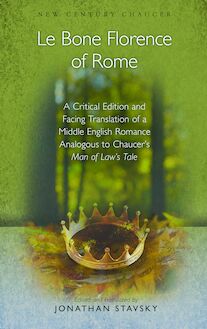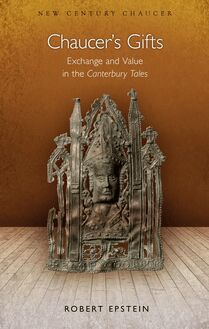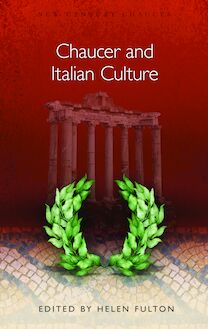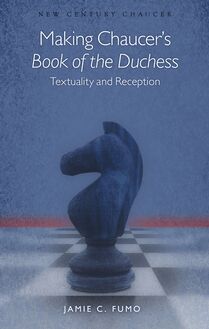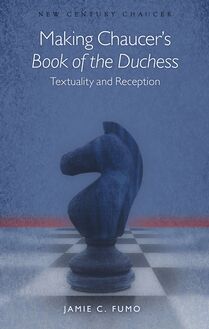-
 Univers
Univers
-
 Ebooks
Ebooks
-
 Livres audio
Livres audio
-
 Presse
Presse
-
 Podcasts
Podcasts
-
 BD
BD
-
 Documents
Documents
-
- Cours
- Révisions
- Ressources pédagogiques
- Sciences de l’éducation
- Manuels scolaires
- Langues
- Travaux de classe
- Annales de BEP
- Etudes supérieures
- Maternelle et primaire
- Fiches de lecture
- Orientation scolaire
- Méthodologie
- Corrigés de devoir
- Annales d’examens et concours
- Annales du bac
- Annales du brevet
- Rapports de stage
La lecture à portée de main
Vous pourrez modifier la taille du texte de cet ouvrage
Découvre YouScribe en t'inscrivant gratuitement
Je m'inscrisDécouvre YouScribe en t'inscrivant gratuitement
Je m'inscrisEn savoir plus
Vous pourrez modifier la taille du texte de cet ouvrage
En savoir plus

Description
Le Bone Florence of Rome is a Middle English tail-rhyme romance whose unique copy dates to the late fifteenth century. An analogue of Chaucer’s Man of Law’s Tale, it follows the adventures of a heroine who survives multiple exiles, sexual harassments and false accusations. At the same time, it explores such issues as the abuse of power, the stakes of global conflict, women’s place in society and their control over their destiny, all of which are treated in significantly different ways from the Constance story and other medieval tales of calumniated women. This fresh edition is accompanied by a complete line-by-line translation, which makes this text accessible to readers at all levels. Its introduction offers a comprehensive analysis of the themes, ideologies and literary relationships of the romance, together with new insights into its local connections and a detailed description of its manuscript context.
Sujets
Informations
| Publié par | University of Wales Press |
| Date de parution | 28 mars 2017 |
| Nombre de lectures | 0 |
| EAN13 | 9781786830661 |
| Langue | English |
Informations légales : prix de location à la page 0,0950€. Cette information est donnée uniquement à titre indicatif conformément à la législation en vigueur.
Extrait
NEW CENTURY CHAUCER
Le Bone Florence of Rome
NEW CENTURY CHAUCER
Series Editors
Professor Helen Fulton, University of Bristol
Professor Ruth Evans, Saint Louis University
Editorial Board
Professor Ardis Butterfield, Yale University
Dr Orietta Da Rold, University of Cambridge
Dr David Matthews, University of Manchester
The works of Geoffrey Chaucer are the most-studied literary texts of the Middle Ages, appearing on school and university syllabuses throughout the world. From The Canterbury Tales through the dream visions and philosophical works to Troilus and Criseyde , the translations and short poems, Chaucer’s writing illuminates the fourteenth century and its intellectual traditions. Taken together with the work of his contemporaries and successors in the fifteenth century, the Chaucerian corpus arguably still defines the shape of late-medieval literature.
For twentieth-century scholars and students, the study of Chaucer and the late Middle Ages largely comprised attention to linguistic history, historicism, close reading, biographical empiricism and traditional editorial practice. While all these approaches retain some validity, the new generations of twenty-first-century students and scholars are conversant with the digital humanities and with emerging critical approaches – the ‘affective turn’, new materialisms, the history of the book, sexuality studies, global literatures, and the ‘cognitive turn’. Importantly, today’s readers have been trained in new methodologies of knowledge retrieval and exchange. In the age of instant information combined with multiple sites of authority, the meaning of the texts of Chaucer and his age has to be constantly renegotiated.
The series New Century Chaucer is a direct response to new ways of reading and analysing medieval texts in the twenty-first century. Purpose-built editions and translations of individual texts, accompanied by stimulating studies introducing the latest research ideas, are directed towards contemporary scholars and students whose training and research interests have been shaped by new media and a broad-based curriculum. Our aim is to publish editions, with translations, of Chaucerian and related texts alongside focused studies which bring new theories and approaches into view, including comparative studies, manuscript production, Chaucer’s post-medieval reception, Chaucer’s contemporaries and successors, and the historical context of late-medieval literary production. Where relevant, online support includes images and bibliographies that can be used for teaching and further research.
The further we move into the digital world, the more important the study of medieval literature becomes as an anchor to previous ways of thinking that paved the way for modernity and are still relevant to post-modernity. As the works of Chaucer, his contemporaries and his immediate successors travel into the twenty-first century, New Century Chaucer will provide, we hope, a pathway towards new interpretations and a spur to new readers.
NEW CENTURY CHAUCER
Le Bone Florence of Rome
A Critical Edition and Facing Translation of a Middle English Romance Analogous to Chaucer’s Man of Law’s Tale
Edited and translated with introduction and notes by
JONATHAN STAVSKY
© Jonathan Stavsky, 2017
All rights reserved. No part of this book may be reproduced in any material form (including photocopying or storing it in any medium by electronic means and whether or not transiently or incidentally to some other use of this publication) without the written permission of the copyright owner except in accordance with the provisions of the Copyright, Designs and Patents Act 1988. Applications for the copyright owner’s written permission to reproduce any part of this publication should be addressed to the University of Wales Press, 10 Columbus Walk, Brigantine Place, Cardiff CF10 4UP.
www.uwp.co.uk
British Library Cataloguing-in-Publication Data
A catalogue record for this book is available from the British Library.
ISBN 978-1-78683-062-3
eISBN 978-1-78683-066-1
The right of Jonathan Stavsky to be identified as author of this work has been asserted in accordance with sections 77, 78 and 79 of the Copyright, Designs and Patents Act 1988.
Cover design: Olwen Fowler
Cover image: Golden Crown © Shutterstock / Rashevskyi Viacheslav
In loving memory of my grandmothers Malka Stavsky (1921–90) and Ethel Radowsky (1912–2001) and my uncle Harry Israel Hurwitz (1935 –2001)
CONTENTS
Acknowledgements
List of Abbreviations
Introduction
Notes
Bibliography
Le Bone Florence of Rome
Explanatory Notes
Textual Notes
Appendix 1: Marginalia
Appendix 2: Middle English Words and Idioms Discussed in the Explanatory and Textual Notes
Appendix 3: Names and Places
Index to the Introduction and Explanatory Notes
ACKNOWLEDGEMENTS
F or eight years now, I have been preoccupied with stories like the one told in this book. My dissertation ‘Susanna, Constance, Griselda: Righteous Women on Trial in Medieval English and European Literature’ (The Hebrew University, Jerusalem, 2013), written under the supervision of Lawrence Besserman, has branched out into multiple projects, incurring far too many debts to be mentioned in a single place. I am grateful to the Ph.D. Honours Program of the Hebrew University Faculty of Humanities and the Rotenstreich Fellowship for Outstanding Doctoral Students in the Humanities for the support that allowed me to devote myself to it. Earlier stages of my research on Le Bone Florence of Rome benefited from criticism offered by Lawrence Besserman, Alastair Minnis and Jon Whitman. I also wish to thank Sara Petrosillo for the opportunity to share it at the ICMS in 2012. After completing my doctoral work, I spent a year as a Fulbright Postdoctoral Fellow at the University of Pennsylvania. This experience has contributed a great deal to my thinking about manuscript culture, without which the present edition would not have been conceivable. It is a pleasure to acknowledge the enduring generosity and support of my hosts, David Wallace and Rita Copeland. Very special thanks go to Leona Toker for her perennially wise guidance.
The greater part of this project was carried out during my term as a postdoctoral fellow at the Mandel Scholion Interdisciplinary Research Centre in the Humanities and Jewish Studies of the Hebrew University. Throughout my stay at Mandel Scholion, its administrative staff and director Daniel Schwartz did their best to maintain a warm, stimulating and flexible working environment, which allowed me to focus most of my energy on completing this book. My colleagues Katelyn Mesler, Iris Shagrir and Sarit Shalev-Eyni readily contributed their advice on the difficulties I had brought to their attention. Mandel Scholion also funded my visit to Cambridge University Library, where I had the privilege to spend many days studying MS Ff.2.38. I am indebted to Ruth Evans and Helen Fulton, the editors of New Century Chaucer, for knowing when to encourage me and when to push me beyond my comfort zone, as well as for their careful attention to my translation and countless suggestions for improvement. Eve Salisbury and an anonymous reviewer provided additional helpful feedback. Whatever errors remain in this book are my responsibility.
During my work on Florence , I have relied on the patience and kindness of my friends and loved ones. In particular, Or Hasson helped me get hold of hard-to-find sources, and Judy Stavsky went over the Introduction and translation and ensured their readability. Benny Majersdorf has been there for me through thick and through thin. He has given me more than I can ever requite.
LIST OF ABBREVIATIONS
AND
The Anglo-Norman Dictionary , online edition
( http://www.anglo-norman.net/ )
EETS
Early English Text Society (o.s. = original series)
OED
The Oxford English Dictionary , online edition
( http://www.oed.com/ )
MED
The Middle English Dictionary , online edition
( http://quod.lib.umich.edu/m/med/ )
MLT
Chaucer’s Man of Law’s Tale
RS
Rolls Series (Rerum Britannicarum medii aevi scriptores)
INTRODUCTION
1. Major Themes
Le Bone Florence of Rome 1 is a fine Middle English romance in tail-rhyme stanzas, presented here in a new edition and, for the first time, a complete translation. This book aims to be of service to readers of all levels: scholars, students, teachers and beyond. In addition to providing a more accurate text of the poem and fuller account of its local connections and place in literary history than has so far been available, it delineates the cultural, social and political significance of the extraordinary story it tells. While a case is made for studying Florence alongside Chaucer’s Man of Law’s Tale , 2 the poem should be of interest to anyone intent on exploring medieval attitudes to subjects as diverse as the abuse of power, the stakes of global conflict, women’s place in society, their control over their destiny and the influence of spiritual on bodily health. Its breadth of vision and at times subtle artistry call for a fresh look.
Like its Chaucerian analogue, Florence charts the progress of a righteous heroine who experiences a series of trials and tribulations: sexual assault or harassment, treachery, displacement and false accusation, all of which are described here in horrifying detail. Besides this general theme, both narratives have a particular episode in common: the slaying of the protagonist’s companion or charge by a frustrated suitor, who proceeds to frame her for murder. 3 Other shared motifs include a Near Eastern monarch who desires to be joined to the heroine ( MLT , 2.176–89, 204–17; Florence , 205–25) and her miraculous escape from attempted rape at sea ( MLT , 2.911–24; Florence , 1828–75). These convergences are not accidental: they stem from a vast tradition whose first known configurations go back to classical and biblical antiquity. Stories of tried women
-
 Univers
Univers
-
 Ebooks
Ebooks
-
 Livres audio
Livres audio
-
 Presse
Presse
-
 Podcasts
Podcasts
-
 BD
BD
-
 Documents
Documents
-
Jeunesse
-
Littérature
-
Ressources professionnelles
-
Santé et bien-être
-
Savoirs
-
Education
-
Loisirs et hobbies
-
Art, musique et cinéma
-
Actualité et débat de société
-
Jeunesse
-
Littérature
-
Ressources professionnelles
-
Santé et bien-être
-
Savoirs
-
Education
-
Loisirs et hobbies
-
Art, musique et cinéma
-
Actualité et débat de société
-
Actualités
-
Lifestyle
-
Presse jeunesse
-
Presse professionnelle
-
Pratique
-
Presse sportive
-
Presse internationale
-
Culture & Médias
-
Action et Aventures
-
Science-fiction et Fantasy
-
Société
-
Jeunesse
-
Littérature
-
Ressources professionnelles
-
Santé et bien-être
-
Savoirs
-
Education
-
Loisirs et hobbies
-
Art, musique et cinéma
-
Actualité et débat de société
- Cours
- Révisions
- Ressources pédagogiques
- Sciences de l’éducation
- Manuels scolaires
- Langues
- Travaux de classe
- Annales de BEP
- Etudes supérieures
- Maternelle et primaire
- Fiches de lecture
- Orientation scolaire
- Méthodologie
- Corrigés de devoir
- Annales d’examens et concours
- Annales du bac
- Annales du brevet
- Rapports de stage
